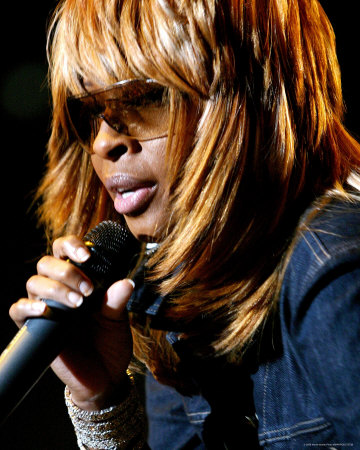Toward Embodied Racial Knowledge
Posted in The Gnovis Blog
This weekend I went to the Africana Woman Conference at Temple University to present a paper on Disney’s The Princess and the Frog. While there, I had the opportunity to listen to a paper by Professor Treva B. Lindsey, who is exploring the significance of performance in black cultural production. Specifically, she was showed us a video of a Mary J. Blige performance of My Life.  Lindsey’s discussion was centered around the ways that Blige’s performances reflected some of the circumstances that Blige experienced early in her life, including molestation, domestic violence, and drugs. Lindsey made a strong argument that Blige’s performances embodied her lived experiences—experiences that other black women with similar experiences not only related to, but also could physically hear in Blige’s music.
Lindsey’s discussion was centered around the ways that Blige’s performances reflected some of the circumstances that Blige experienced early in her life, including molestation, domestic violence, and drugs. Lindsey made a strong argument that Blige’s performances embodied her lived experiences—experiences that other black women with similar experiences not only related to, but also could physically hear in Blige’s music.
Lindsey’s paper was very related to many things that I’m considering this semester as I ponder spoken word performances, visual representations of black women in the media, and the position of blackness as a racial construct in the symbolic order of the United States. I’m particularly interested in how, given our current state of supposed “postracialism,” race continues to be a significant factor in how bodies are valued, judged, acted upon, and represented in our society.
I am often overwhelmed by both the history and the continued incidents of violence that black bodies have encountered in the United States. While it is often glossed over a s a point of reference, U.S. slavery was one of the most violent and atrocious genocides to occur in the past 500 years. Jim Crow segregation, lynchings, and the violence that black bodies encountered through the civil rights movements were additional traumatic experiences both for those who had the direct experiences and for black people who watched other black bodies suffer on television or in person. Hurricane Katrina and the endless string of police brutality instances in the media (as well and the numerous ones that remain unnamed) are the most poignant recent examples of black bodies being devalued as human.
s a point of reference, U.S. slavery was one of the most violent and atrocious genocides to occur in the past 500 years. Jim Crow segregation, lynchings, and the violence that black bodies encountered through the civil rights movements were additional traumatic experiences both for those who had the direct experiences and for black people who watched other black bodies suffer on television or in person. Hurricane Katrina and the endless string of police brutality instances in the media (as well and the numerous ones that remain unnamed) are the most poignant recent examples of black bodies being devalued as human.
The examples I’ve given are not by any means exhaustive. Rather, they are examples that I can easily share with readers of this blog so we all have a common reference point. My life is populated by these occurrences—these things that happen around and to black bodies—on a daily basis. Two weeks ago, my youngest brother, a sophomore in college and a resident assistant on his hall, called me to share the experience of reporting a hate crime to the police. The only other black RA on the staff had come home to the racial slur NIGGER GO HOME and drawings of nooses on his white board. My brother was shaken to the core, and felt helpless to do anything, as the police had no idea who had done it, and there were no cameras that caught the act. My brother said he felt unsafe. I told him to be careful and watch where he went at night. I felt unsafe for him, and for myself. That experience affected both of us in our bodies, because we carry the same skin as the target of those slurs. Neither of us slept well that night.
Of course, having this skin and having those experiences, provides me with a particular experience and perspective on life that those without this skin do not necessarily understand. I won’t try to explain it here—I will leave some of those things to ponder during this year as I write more blogs. But suffice it to say that when I listen to Mary J. Blige sing “I’m Not Gon’ Cry,” after I speak with my brother, and I listen to her embodied suffering through my iPod, I hear a different thing that stems directly from the accumulation of experiences I have–in and because of this skin.
While some may take objection to my choice to speak of racial difference as not completely socially constructed, I want to simply take a moment to remind my readers that while the meanings around black bodies and racism may have a constructed aspect to them, the violence and suffering borne by bodies like my own are not constructions. They are physical acts that emerge from a complicated history of violence that has created a symbolic social order and a specific understanding of race that people act upon every day in both mundane and exceptional ways. It is from this position—the embodied knowledge of a black female—that I will explore questions of race, representation and performance this year.
